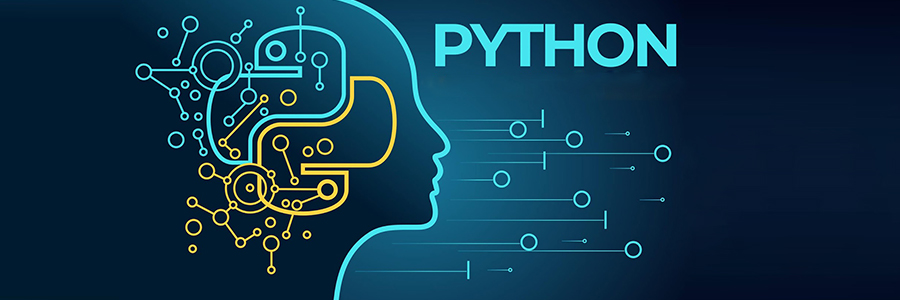Why and how Python is Perfect for Machine Learning And Artificial Intelligence

AI as well as Machine Learning the latest trend of the IT business. While dialogues over the wellbeing of its advancement continue raising, designers grow capacities and limit of fake astuteness. Today AI went a long way past sci-fi thought. It turned into a need. Being broadly utilized for preparing and investigating enormous volumes of information, AI handles the work that is impossible physically any longer in view of its fundamentally expanded volumes and force.
For example, AI is applied in a process to assemble forecasts that will help individuals make robust techniques and search for progressively successful arrangements. Industrial technological companies with the help of AI do statistical surveying and foresee where to contribute assets for more significant benefits. Trip-Planning industries utilize AI to convey customized recommendations or dispatch chatbots in addition to upgrading the extensive client experience. These models demonstrate that Artificial Intelligence and Machine Learning are utilized procedure with heaps of information to offer better client experience, increasingly close to personal and precise one

An extraordinary selection of libraries is one primary reason Python is the most well-known programming language utilized for AI. A library is a gathering of modules distributed by various sources such as PyPi which incorporates a pre-composed bit of code that enables clients to arrive at some usefulness or perform various activities. Python libraries give base-level things, so designers don't need to decipher them from the earliest starting point without fail. Python's libraries let you access constant information preparing, handling and changing information which is essential for Machine Learning. These are probably the most across the board libraries you can use for Machine learning and Artificial Intelligence.
- Scikit-learn in order to take care of essential ML calculations like grouping, direct and strategic relapses, relapse, arrangement, and others.
- Pandas for significant level information structures and examination. It permits blending and sifting of information, just as a social event from other outside sources like Excel, for example.
- Tensor Flow which helps in profound learning by preparing, and using artificial neural systems with large datasets.
- Matplotlib for making 2D plots, outlines and different types of representation.
- Keras for profound learning. It permits quick computations and prototyping because it utilizes the GPU notwithstanding the CPU of the PC.
- NLTK for making computational phonetics, regular language acknowledgement, and preparing.
- Caffe for profound discovering that permits exchanging data among the CPU and GPU and handling 60+ million pictures a day utilizing a solitary NVIDIA K40 GPU.
- PyBrain for neural systems, unaided and support learning.
- Scikit-picture for picture preparing.
- Statsmodels for accurate calculations and information investigation.
Working in this industry means managing a lot of information that you have to process, which is an advantageous and compelling manner. The low section hindrance enables more information researchers to rapidly get Python and start utilizing it in the AI improvement without squandering an excessive amount of exertion so that it will help in learning the language. Python is a programming language that looks like the regular English language which makes the way toward learning simpler. Its basic punctuation enables you to serenely work with some complex frameworks, guaranteeing the clear relations among the framework components.
Here’s the code:
test_number = 407 # our example is not a prime number
# prime numbers are greater than 1
if test_number> 1:
# check for factors
number_list = range(2, test_number)
for number in number_list:
number_of_parts = test_number // number
print(f"{test_number} is not a prime number")
print(f"{number} times {number_of_parts} is {test_number}")
break
else:
print(f"{test_number} is a prime number")
else:
print(f"{test_number} is not a prime number")
What's more, as you may find in the last line, the consequence of the above code is that a test number is definitely, not a prime number. If we put it obtusely, an English-talking individual could without much of a stretch comprehend the significance of that code, so it utilizes straightforward English words. Furthermore, there's a great deal of documentation accessible, and Python's people group is consistently there to assist and offer guidance.
Python for AI is an extraordinary decision because this language is entirely adaptable:
It offers a choice to pick either to utilize OOPs or that scripting.
There's likewise no compelling reason to recompile the source code; engineers can execute any progressions and rapidly observe the outcomes.
Software engineers can join Python and different dialects to arrive at their objectives.
Additionally, adaptability enables engineers to pick the programming styles, which are entirely OK or even join them to take care of various kinds of issues in the most proficient manner.
The basic style comprises of directions that depict how a PC ought to play out these directions. With this style, you characterize the grouping of calculations which occur as a difference in the program state.
The utilitarian style is additionally called explanatory in light of the fact that it pronounces what activities ought to be performed. It doesn't consider the program state, contrasted with the basic style; it pronounces articulations as scientific conditions.
The situated article style depends on two ideas: class and item, where comparable articles structure classes. This style isn't entirely bolstered by Python, as it cannot wholly perform epitome. However, designers can, in any case, utilize this style to a limited degree. Its procedure is the most well-known among tenderfoots, as it continues undertakings in a bit by bit position. It is frequently utilized for sequencing, modularization, and choice.
The adaptability factor diminishes the plausibility of mistakes, as software engineers get an opportunity to take the circumstance levelled out and worked in an agreeable domain.
It's in every case accommodating when there is a robust network bolster worked around this programming language. There's a lot of assets open for developers in python. Python documentation is accessible online just as in Python people group and gatherings, where software engineers and AI designers talk about blunders, take care of issues, and help them solve their issues. Python is totally similar to the assortment of valuable libraries and apparatuses.
Python isn't just agreeable to utilize and simple to adapt yet, in addition, flexible. Python which is used for AI advancement, can keep running on any stage including Windows, Unix,macOS, Linux, and 21 others. To move the procedure starting with one stage then onto the next, engineers need to actualize a few scale changes and adjust a few lines of code to make it executable for the picked stage. Designers can utilize bundles of PyInstaller to set up their code for running on various stages. Once more, this sets aside time and cash for tests in different stages and creates the general procedure increasingly essential and advantageous.
ML and AI are the future of every aspect of our life and will help us to solve our problems. Thus these are the following reasons for considering Python the perfect one for the said purpose:
- Has great flexibility
- Easy to understand and interpret
- The large community represents it
- Independent, from other platforms
- Growing immensely among the developers
- It has a vast library system
